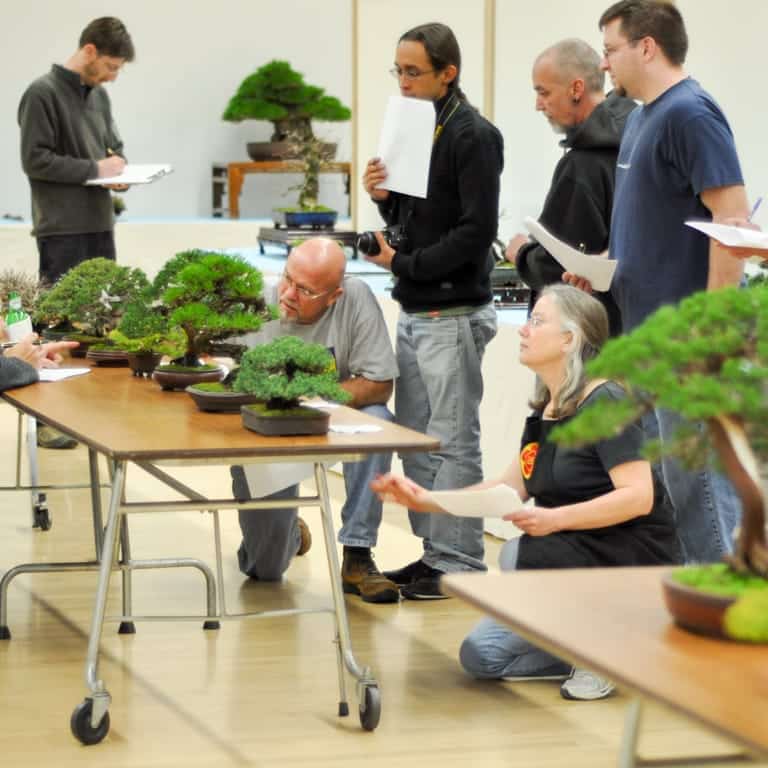In the run-up to this fall’s Pacific Bonsai Expo, I’ve been thinking a lot about evaluating bonsai. We’re working on a scoring system for the Expo judging panel and wanted to give everyone who’s interested a chance to test the approach out.
For sample trees, I’ve selected images from the 94th Kokufu Exhibition held in 2020.
This week I’ll provide a link to twelve conifers and twelve deciduous bonsai. Next week I’ll send a link to multi-point displays in the medium and shohin categories.
Your job, if you’re up to it, is to assign a score for each tree. I’ll share the results in a few weeks.
What goes into a score?
I wrote about evaluating conifers and deciduous bonsai earlier this year (see “Conifers vs. deciduous bonsai: evaluating different species“). What I didn’t mention were thoughts on assigning specific scores.
On a five point score, do trees of average quality get a score of 3 or 2 (or 1)? The former is good for grouping the exhibit into equivalent tiers of quality while the latter is good for identifying the very best trees in the show.
For the present exercise – an opportunity to evaluate trees on display at Kokufu – you can use whichever approach works best for you.

Members of the judging panel at the 2009 Bay Island Bonsai exhibit
For those looking for concrete starting points related to evaluating bonsai, see the “Artisans Cup judging rubric.”
For everyone else, put on your bonsai evaluation cap and head to the Kokufu 94 Scoring Exercise.
Subscribe to Bonsai Tonight
New Posts Delivered Every Tuesday and Friday
Felix says
Thank you Jonas, this was a very interesting exercise. I am a bonsai beginner (second year owning trees) and have absolutely no experience in judging. I kept the judging rubric from Dave de Groot’s new (edition) book next to me but I have to admit that most of my judging defaulted back to my visceral reaction to the tree. To my shock I gave out a large number of 2s and 3s and not a single 7. Mostly, this was due to the overall proportion and shape of the crowns, too dense, too round and too low ending (or overall weirdly proportioned. It all seemed incredibly artificial and uncanny… almost as if one tried to force a ‘perfectly dense crown’ on top of a trunk no matter what. That being said, I am very critical by nature and never pursued any sort of art before. All this made me very conflicted between the obvious technical mastery but my dislike for the overall look of the trees. A lot to learn from this one short exercise!
Michael Corbin says
Thanks Jonas…that was fun.
Jeremy Erb says
I would be interested to see the results of the voting!
K C says
I found the five point score easier to work with than the BIB 7 point system, and tried to identify my favorite trees first based on difficulty and nuances of species, time-based techniques for density and optimum health. However, I wasn’t able to factor in scores for pots and stands. My favorites: The huge truck Beech and enormous Karin.
M Arcega says
Thank you. That was fun. All great specimen, btw. But for some odd reason, I was looking for something along the lines of “less is more” when it comes to bonsais. I am such a newbie at this that I have some odd preconception of what an exemplary bonsai should look like, at least to my mind’s eye.
This was a fun exercise.
Penny says
I loved this exercise and it would be interesting to know why we each picked a score. In some cases, I felt the tree needed some pruning or limb removal to look it’s best. However that juniper with the life line going up it was the tops to me. Anxious for the results.